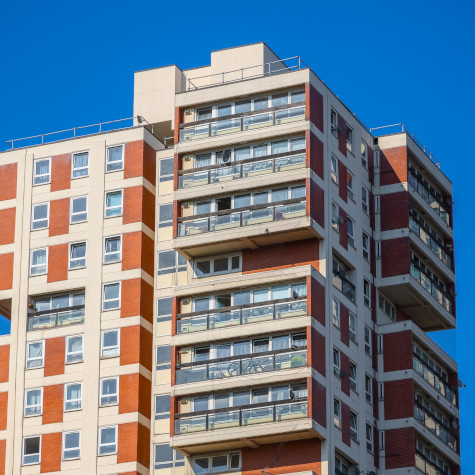If you have followed our blog for a while now, you will have seen our previous post around the cladding scandal and why it is affecting so many leaseholders across the country. Despite the Government’s proposed legislation to protect leaseholders from the costs associated with rectifying any identified fire safety issues in their block of flats, many leaseholders are still stuck with no way of selling their flat, with mortgage providers requiring an EWS1 form before being able to offer any kind of loan.
As an integral part of our property valuation team, Mario Pericleous MRICS has visited blocks of flats across the country and is therefore perfectly suited to explain what the EWS1 form is, when one is needed and what the results might mean for you.
The ‘ins and outs’ of the EWS1 rating
When carrying out a valuation for properties in mid- to high-rise block properties, the cladding, insulation and other fire safety measures are taken into account. The areas on the outside of the building are referred to as the external wall system (EWS). When rating the safety of the external wall system, the EWS1 form is used by qualified fire safety engineers to record their findings. The EWS1 form assigns the property a rating, ranging between A1-3 or B1-2.
When carrying out the assessment, the fire safety expert will need to determine whether the primary materials used for the external wall are of ‘limited combustibility’. If they are, then the property will receive one of the ‘A’ option ratings, where an A1 and A2 means that either the external walls do not have any attachments (or cladding) or if they do, then a fire risk assessment has been completed and they are deemed to be acceptable without any remedial work having to be undertaken.
An ‘A3’ rating unfortunately means that the fire risk assessment does not consider them safe and therefore would result in a mortgage being rejected.
If the external wall is primarily made up of a material that is not considered to be of ‘limited combustibility’, then the form would automatically assign an option ‘B’ rating. A result of ‘B1’ would mean that, while there are concerns around the cladding or other fire safety measures relating to the external walls, a fire risk assessment has been carried out and the risk is considered to be low.
Conversely, a ‘B2’ rating means that the fire safety expert deems the EWS to need remedial work making to it before it can be considered safe. A ‘B2’ rating would result in any mortgage application being rejected.
When do I need an EWS1 form?
While the temptation might be there to get an EWS1 form for any mid- to high-rise property, the truth is doing so could cause unnecessary complications and delays to the sale of your property.
The current RICS guidance states that an EWS1 form is only needed for:
- Buildings that are over six storeys which either have cladding or curtain wall glazing or that have balconies that are stacked vertically above each other
- Buildings that are five or six storeys where there is a significant amount of cladding – which equates to 25% or more of the entire building elevation is covered in cladding – or where there are ACM (Aluminium Composite Material), MCM (Metal Composite Materials) or HPL (High Pressure Laminate) panels, or if the building has vertically stacked balconies
- Buildings that are four storeys or lower in height but do have ACM, MCM or HPL panels.
Interestingly, there are also cases where the EWS1 form has been used to assess the safety of materials used in internal elevator shafts. Fire safety in blocks of flats obviously does not only cover cladding and stacked balconies, so please do seek advice if you think this might apply to the building your property is in.
Does having a EWS1 B2 rating make my property worthless?
When carrying out a valuation on a property that has an EWS1 form rating of either A3 or B2, our valuers are required to assign the property a nil value.
Thankfully, this does not mean that the property is worthless! All it signifies is that, at the date of valuation, they cannot give it a value for lending purposes.
In certain instances, it is possible for us to assign a special value, called a Special Assumption Value. This allows us to determine the value of the property under the assumption that there are no cladding or other fire safety issues affecting the property – generally because they did not exist to have been rectified. While this does not help a leaseholder in terms of selling the property to someone who needs a mortgage, it does at least give them an idea of what their flat could be worth if a cash buyer were to buy it.
Has your flat received an EWS1 form rating of A1, A2 or B1?
Do you need some expert advice on getting a valuation for your flat?
Our Valuation team would be delighted to provide you with a residential valuation.
Call our team of RICS registered Valuers on 0800 071 5517 or email admin@awh.co.uk.

